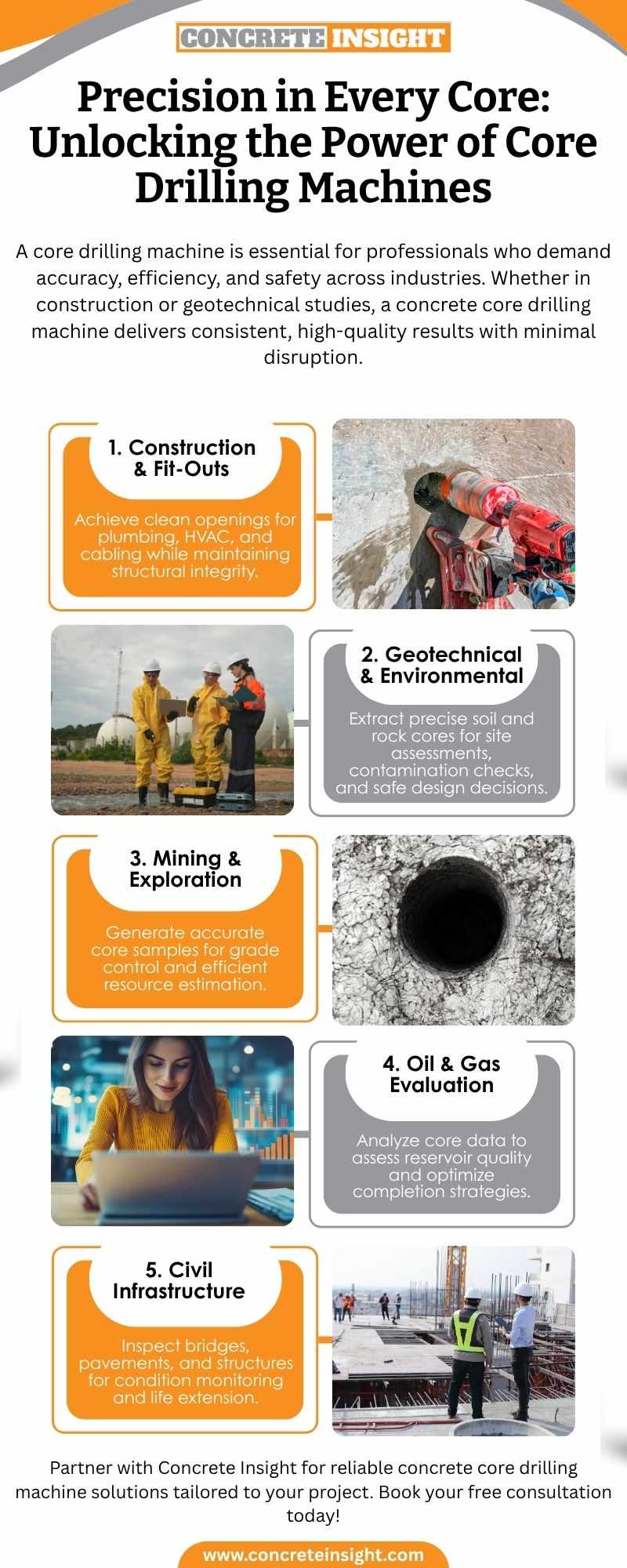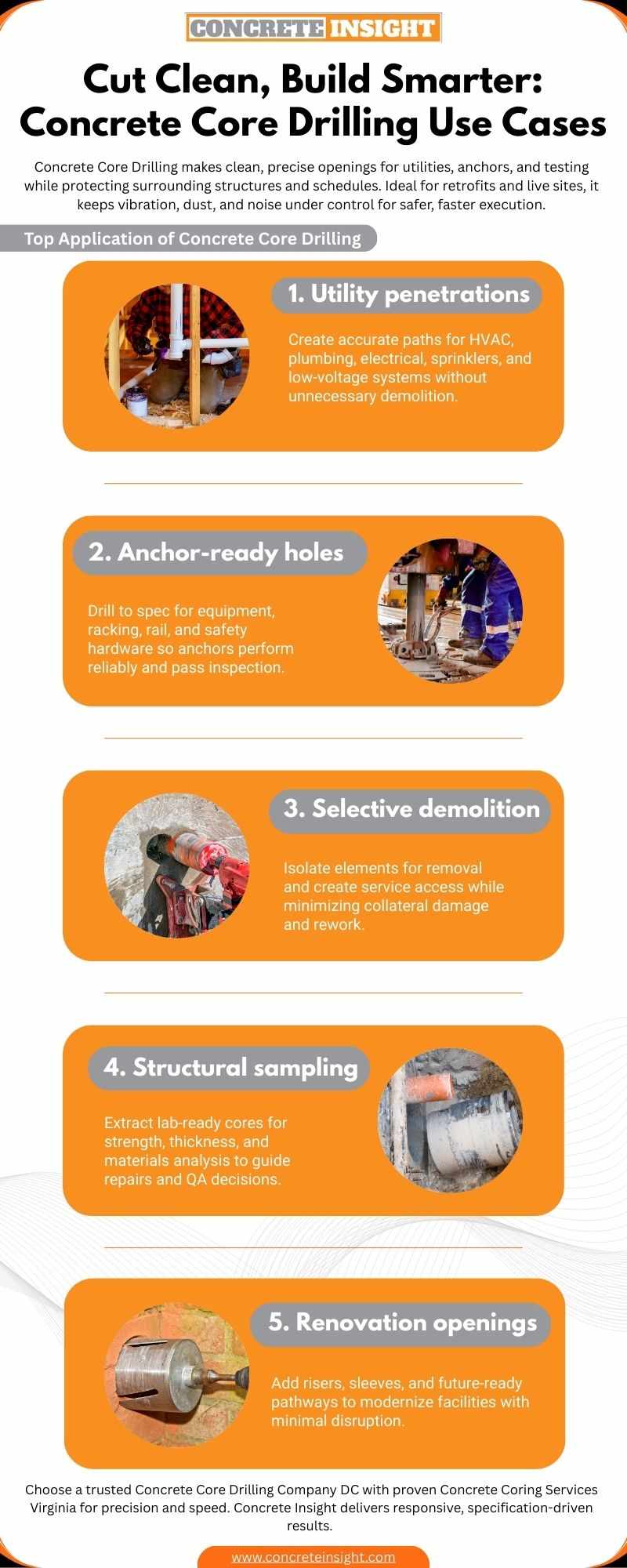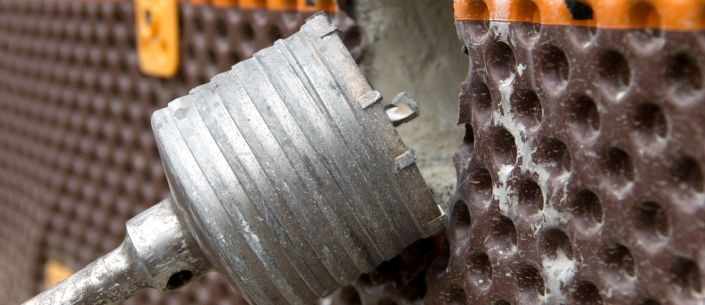
Accuracy sits at the heart of construction today. A single misjudged cut can compromise structural stability, while a perfectly measured hole can pave the way for decades of reliability. Among the methods that deliver that precision, concrete core drilling now stands as a preferred choice for engineers and builders alike.
Placing a diamond-tipped, hollow bit against cured concrete may sound simple, yet the technique demands a careful balance of speed, pressure, and alignment. The reward is a flawless, circular opening ready to carry electrical conduits, water pipes, ventilation lines, or test samples for quality checks.
As projects grow more complex, contractors value this accuracy because it limits disruption and protects surrounding materials.

Core Drilling Vs. Other Cutting Practices
Wall, flat, and wire sawing remove large concrete sections or create door and window openings. Core drilling, by contrast, focuses on round penetration points. Precision matters most where crews must thread services through congested slabs or columns. The method also avoids microfractures that could undermine reinforcement, making it a reliable option in sensitive or occupied sites.
Clear Advantages of Concrete Core Drilling
1. Exact Results with Minimal Impact
Smooth hole walls translate to tight seals and straightforward fittings, resulting in reduced rework and wasted material.
2. Faster Turnaround
Modern rigs operate quickly, allowing schedules to compress and labor hours to drop.
3. Cleaner, Safer Work Areas
Water-fed systems curb airborne dust, and improved motor technology keeps noise low, a benefit in hospitals, offices, and city centers.
Supporting Expanding Infrastructure
Growing cities rely on hidden networks of power, data, and water. Core drilling concrete provides the neat pathways these systems require. Precise holes lower the risk of striking existing utilities, cut back on costly patching, and allow inspectors to extract samples that reveal compressive strength and durability.

Key uses include:
Routing new utility runs through reinforced slabs in both new and legacy buildings
Harvesting cores for laboratory testing without weakening the host structure
Introducing drainage points in bridges or pavements to prolong service life
Upgrading dense urban infrastructure while keeping traffic or daily operations moving
Applications Across Sectors
Demand for core drilling services stretches far beyond skyscrapers:
Commercial complexes need accurate penetrations for fire suppression, data cabling, and climate control.
Home renovations often involve upgraded plumbing or wiring that benefits from cleanly drilled passages.
Transportation projects rely on core samples to gauge pavement health and on drilled drains to prevent water damage.
Utility providers depend on precision holes to lay fiber optics, gas lines, and water mains without harming adjacent installations.
Concluding Thoughts
Accuracy, speed, and adaptability, combined through concrete core drilling, continue to shape the foundations of contemporary construction. The process converts solid concrete into functional pathways while protecting the integrity of the structure around it. As city skylines rise and infrastructure ages, this disciplined technique will remain an invaluable part of every builder’s toolkit.
Builders preparing for a project might consult specialists like Concrete Insight. Their experience in concrete cutting, coring, and drilling can help transform design intent into safe, lasting reality. To begin, call Concrete Insight at (832) 271-6244 or visit their website to request a free quote.















Write a comment ...